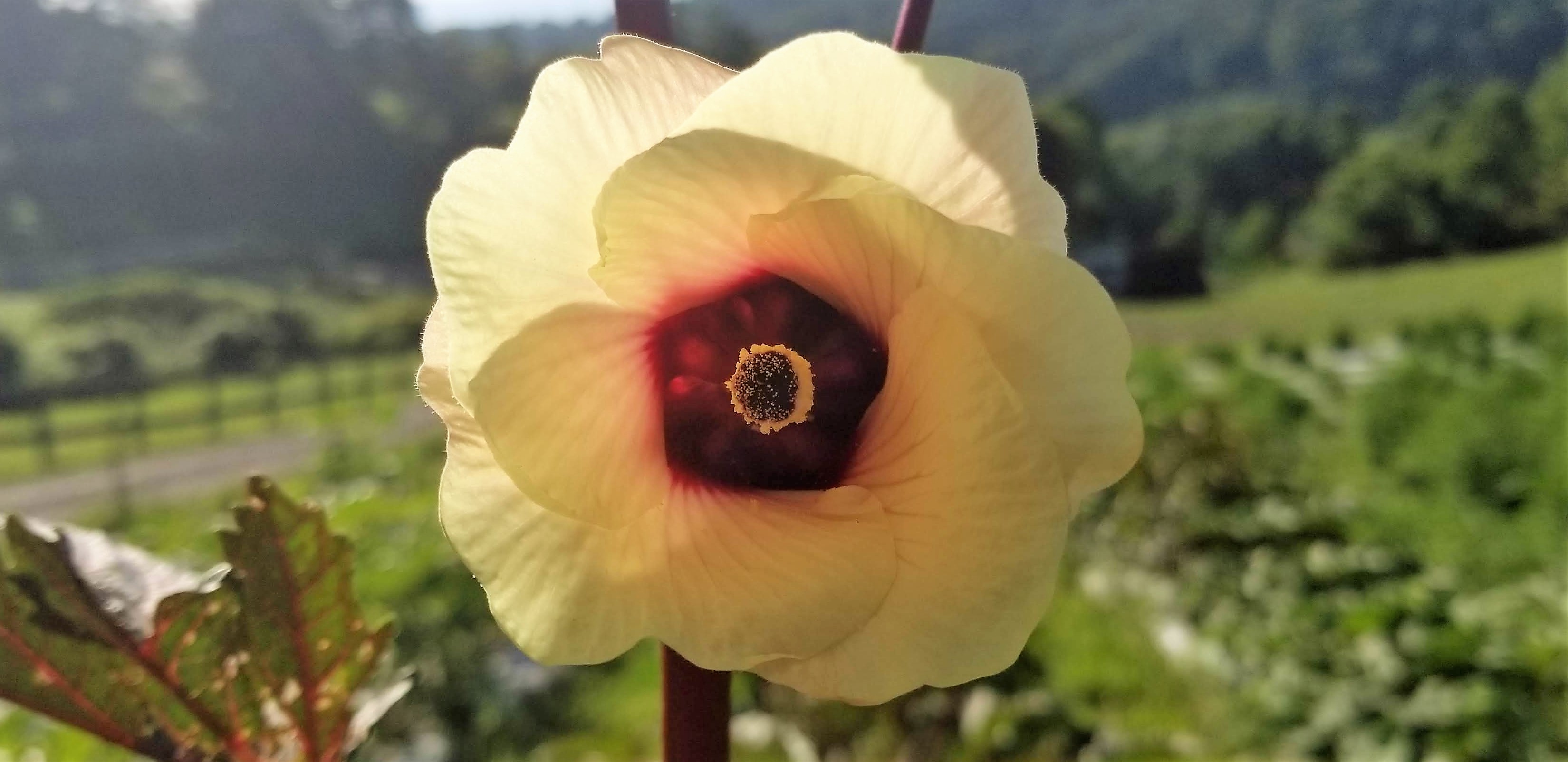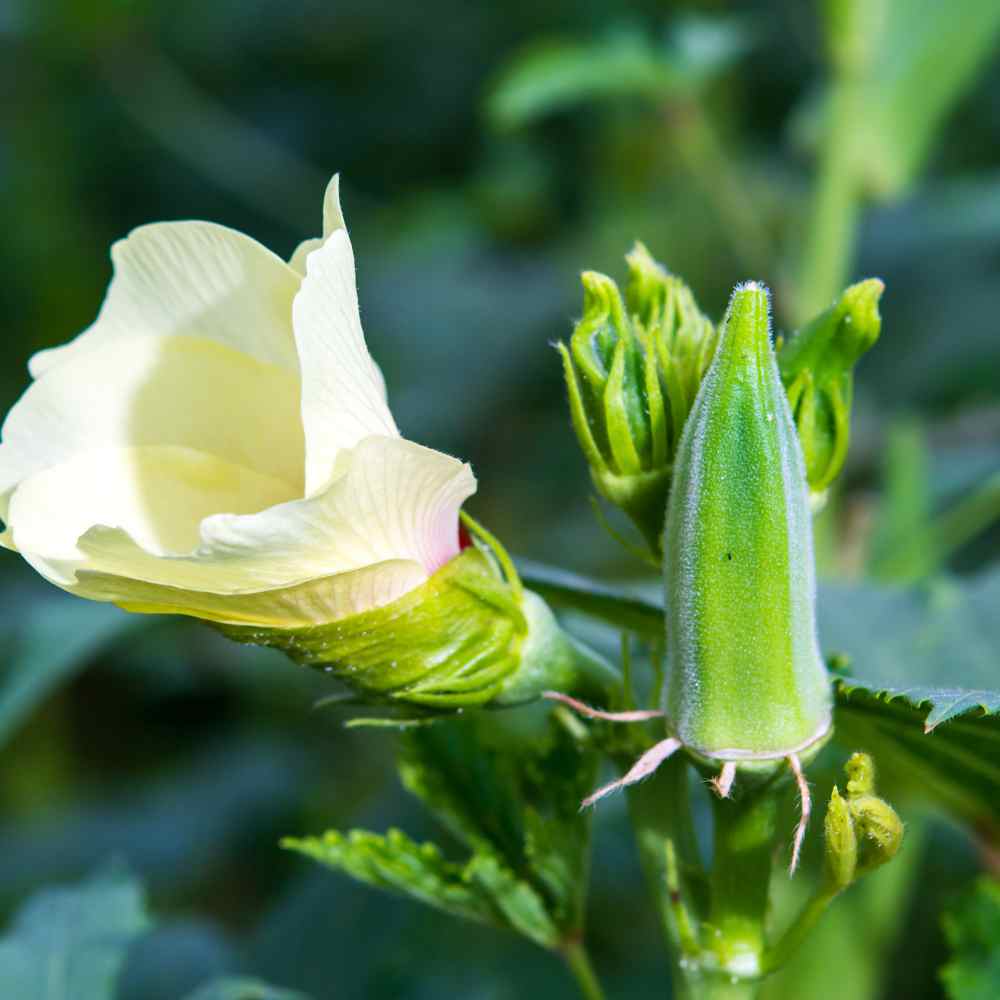
Walk through your garden each day, and be on the lookout for aphids and stink bugs feeding on the juices of emerging pods. Did you know okra can be grown as an ornamental too? This beauty would look at home in any annual garden.
#Okra flower Patch
Keep your veggie patch clean, and remove dead leaves and old vegetation.

Okra is not particularly prone to pests or disease, but both are always a possibility.Īvoid the need for troubleshooting later with crop rotation, high quality seed, ample air circulation, and appropriate moisture. Give your plants the best conditions you can in terms of sun exposure, provide adequate watering and sun protection to try to keep your plants cool in a heatwave, and cover seedlings for extra warmth in the case of a late-season coldsnap. Feed with a balanced vegetable fertilizer throughout the growing season, per package instructions.Įxtreme weather fluctuations can affect this plant, causing flowers and buds to drop, or pods to fail to form. Sow more seeds than you need, and when sprouts have their first true leaves, thin them out, keeping only the strongest.Īpply a layer of mulch around your plants to inhibit weed growth and aid in moisture retention. Tall types reach up to four feet in diameter, and this knowledge will aid in spacing your plants in the garden. Keep in mind that okra doesn’t take well to transplanting, so you’re likely to lose some seedlings if you go with this planting method.īe sure to read seed packages for specific instructions, and for details on plant heights and widths.

I like to use egg cartons or peat pots I can place directly into the ground, because okra has fragile roots. Transplant sturdy seedlings to the outdoor garden around the last frost date. Since the soil needs to be warm to encourage germination, consider using a heat mat. You may also start seeds indoors up to two months before the last average frost date in spring. In cold regions, like mine in the Northeast, you’ll have to wait a little longer for the soil to warm up enough for direct sowing outdoors, at least two weeks after the last frost date, maybe more. Around mid-summer, you may prune tall varieties to encourage further growth, and you can also choose to plant a fresh crop at that time for a late harvest. In warm climates, direct sow in the early spring garden when soil temperatures are at least 60☏, to a depth of about one inch.

Prepare seeds for planting by scraping each lightly with a nail file and soaking in tap water overnight. It will grow in poor soil and can even withstand some drought conditions, but may not produce optimally under these circumstances. A neutral soil pH between 6.5 and 7.5 is preferred.
#Okra flower full
It prefers full sun, average moisture without letting the soil dry out completely if possible, and good soil that drains well.
#Okra flower skin
Wearing long sleeves and gloves to protect your skin is always recommended when you’re working in the garden. Much like stinging nettles, washing and cooking, or blanching in boiling water, will remove these irritating hairs. For some, handling the plant may actually cause an allergic skin reaction. Gardeners often prefer “spineless” varieties, because these protrusions commonly cause itching and irritation when okra is harvested and prepared. Though these aren’t technically spines like what you might find on a cactus, they’re commonly referred to as such, and they can be a real pain for whoever is doing the harvest. In fact, the leaves, stems, and pods of this plant are often setulose, or covered in tiny hairs or bristles. Pods may be green or red curved or straight with or without ridges and smooth or covered in tiny fuzzy “spines.” Yellow flowers with red centers resemble hibiscus.

Plants are typically green, but may also be red-stemmed with red-veined leaves. Rich in fiber, protein, and vitamins A, C, and K, okra is not only a nutritious addition to veggie gardens, but makes an attractive specimen in beds and borders, with varieties ranging from dwarf to over eight feet tall at maturity.


 0 kommentar(er)
0 kommentar(er)
